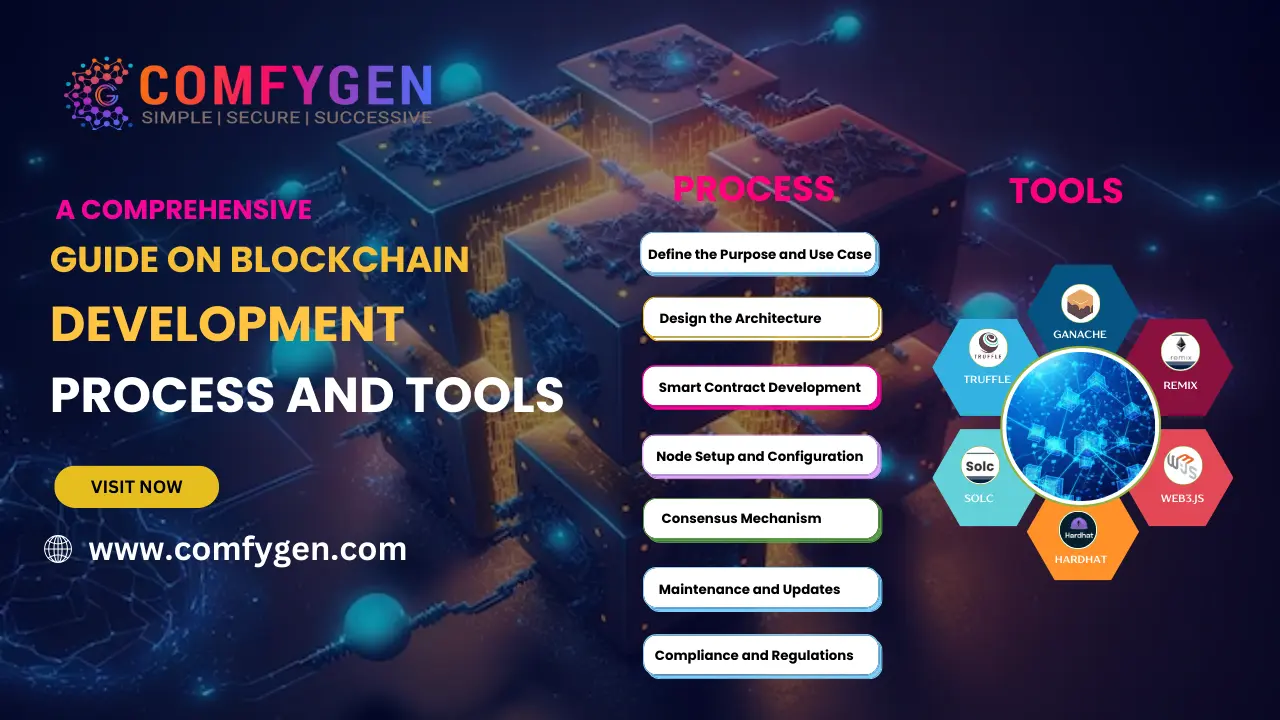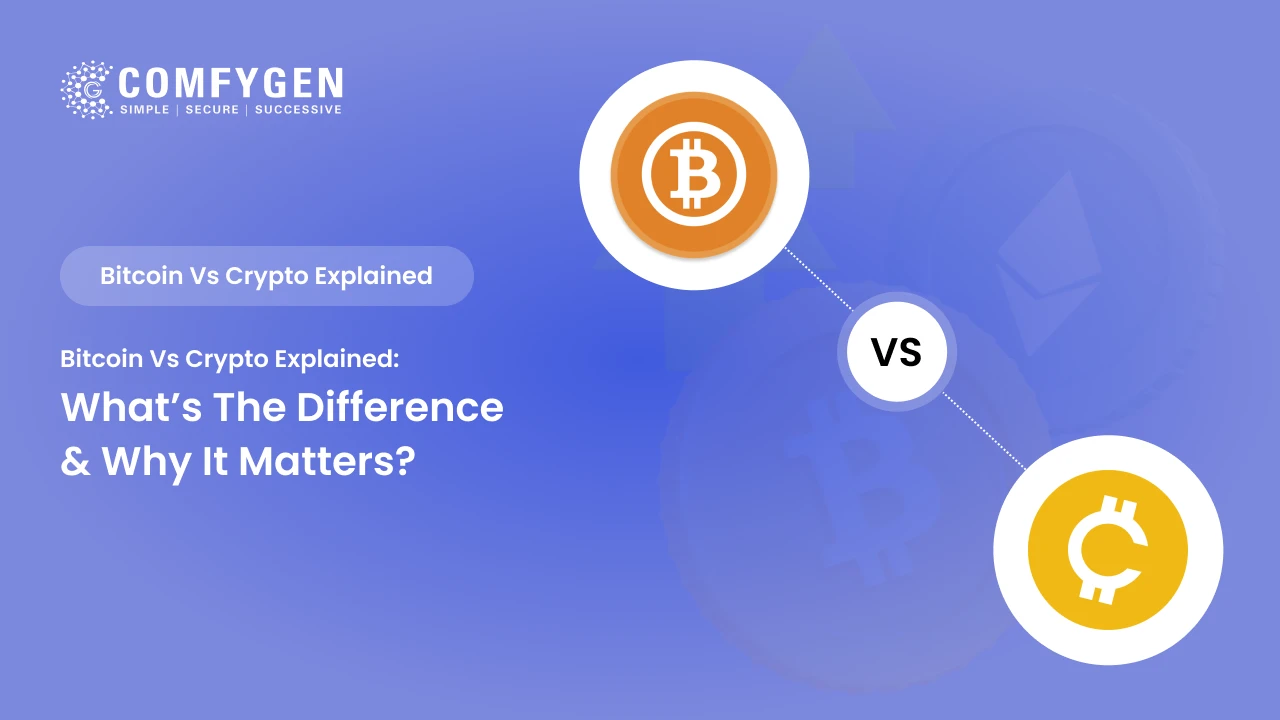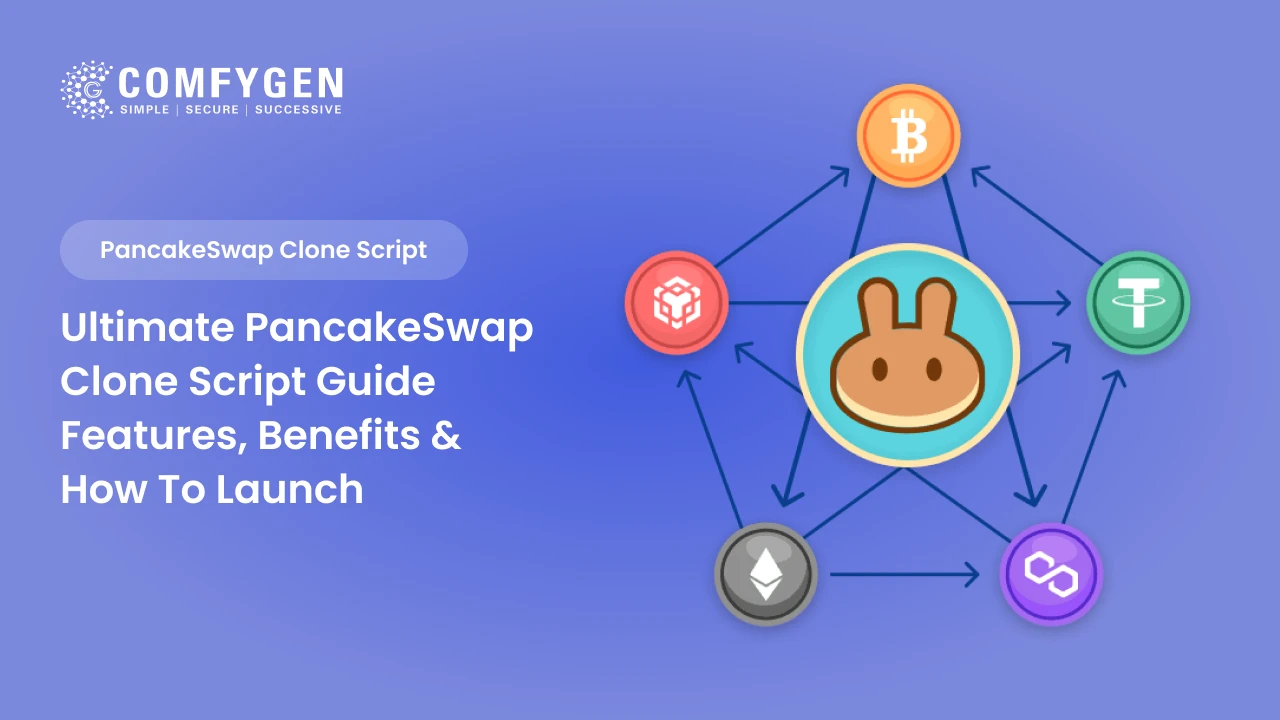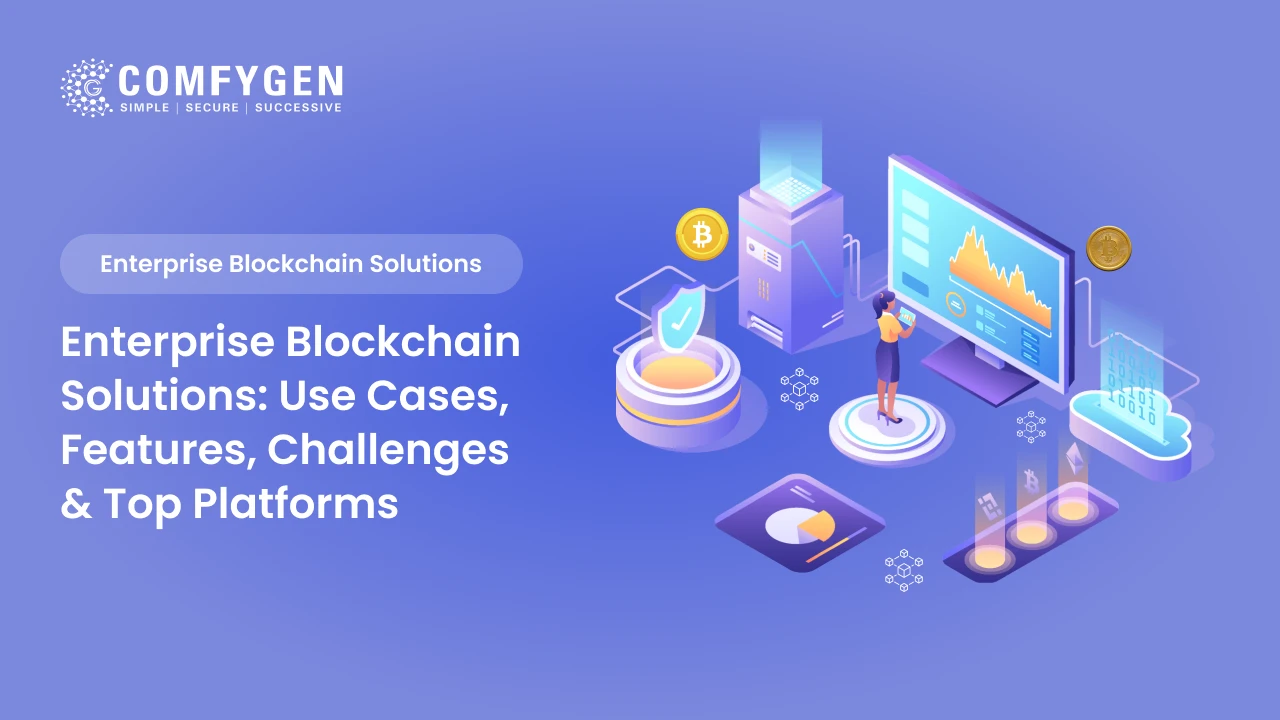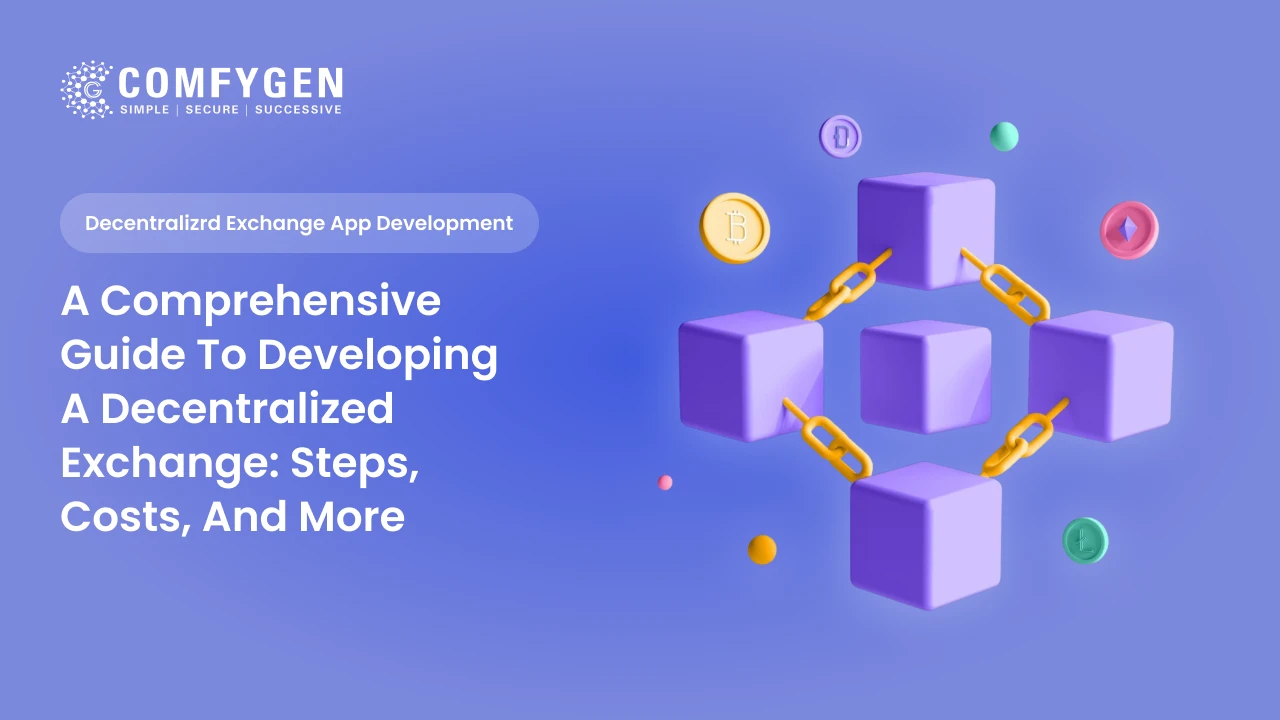A Comprehensive Guide on Blockchain Development Process and Tools
Blockchain Development is a multifaceted process that demands a thorough understanding of its intricacies and the right set of blockchain development tools. It begins with conceptualizing the project, defining its objectives, and selecting the appropriate blockchain development platform, be it Ethereum blockchain development, Hyperledger blockchain development, or others, based on the specific use case. The next crucial step involves designing the blockchain architecture, including smart contracts blockchain development and consensus mechanisms. Blockchain Developers then embark on coding, using languages like Solidity for Ethereum blockchain development. Extensive testing follows to ensure security and functionality. Subsequently, deployment to the chosen network occurs, alongside constant monitoring for potential issues. A range of blockchain development tools such as Remix, Truffle, and Ganache aid in this journey, offering everything from coding to debugging. Staying current with blockchain development trends and protocols is vital in this ever-evolving landscape, ensuring a successful blockchain development process.
If you are an entrepreneur and looking to invest in the blockchain, you should understand the comprehensive blockchain development process and tools.
This Comprehensive Guide is intended for entrepreneurs, product managers, founders, and innovators looking to have knowledge of the blockchain development process and tools, and how to integrate blockchain into the businesses.
Read further to know the step-by-step process of blockchain application development.
Introduction to Blockchain Development
Blockchain technology has emerged as a game-changing phenomenon, bringing about a profound shift in numerous blockchain development industries through its provision of unparalleled security, transparency, and decentralization. Within the context of this all-encompassing comprehensive guide on Blockchain Development Process and Tools, we will delve into the essential principles of blockchain development agency, underscore its significance, illuminate the blockchain development journey, highlight the advantages it offers, dissect the various blockchain development network types, and unveil its practical applications in the real world of blockchain development Industry.
What is Blockchain Development?
Blockchain is a distributed ledger technology that facilitates the secure and transparent documentation of transactions across a blockchain development network of computers. It comprises a sequence of blocks, each housing a collection of transactions. What sets blockchain development apart is its decentralized character, where no single entity holds authority, rendering it highly resistant to fraud and manipulation. Transactions undergo verification by a blockchain development network of nodes utilizing consensus mechanisms like blockchain development Proof of Work (PoW) or blockchain development Proof of Stake (PoS). Once incorporated into the blockchain development, data becomes unchangeable, thereby guaranteeing the integrity of records.
Importance of Blockchain Technology
The importance of blockchain development transcends the realm of cryptocurrency development. It serves as a bedrock for trust in digital landscapes, facilitating blockchain development applications across diverse sectors like finance based blockchain development, MultiChain Blockchain Development, healthcare based blockchain development, and beyond. Its fundamental qualities, encompassing security, transparency, and immutability, position it as a potent instrument for curbing fraud, optimizing operations, and nurturing innovation.
Blockchain Development Process
The blockchain development process begins with conceptualization, where project objectives and blockchain types are defined. Blockchain Development Platform selection follows, choosing Ethereum blockchain development, Hyperledger blockchain development, or others as needed. Next, architects design the blockchain development structure, including smart contracts blockchain development and consensus mechanisms. Blockchain Developers then code the project using blockchain-specific languages, with rigorous testing ensuring blockchain development security. Deployment on the chosen blockchain development network follows, with ongoing maintenance and updates as necessary. This comprehensive guide for blockchain development process ensures the successful development of blockchain applications, with each step critical to achieving secure and efficient results.
Benefits of Using Blockchain Technology
Blockchain technology presents a diverse range of compelling advantages that extend well beyond its original blockchain development application in cryptocurrencies. In this context, let’s delve into some of its primary benefits and discover how it is reshaping cryptocurrency development industries and innovation:
- Enhanced Security: The cryptographic methods employed by blockchain technology guarantee strong security measures. Information is securely stored in an unchangeable ledger, greatly impeding any unauthorized attempts to manipulate or compromise records. This attribute holds exceptional significance in sectors such as finance based blockchain development, healthcare based blockchain development, and the supply chain based blockchain development, where preserving the integrity of data is of utmost importance.
- Transparency: Blockchain’s transparent nature enables all participants in a network to view and verify transactions. This transparency builds trust and reduces the need for intermediaries, streamlining processes and reducing blockchain development costs.
- Immutability: Once information is recorded on the blockchain development, it becomes permanent and resistant to alteration. This immutability is immensely valuable for preserving a precise and unmodifiable historical log of transactions, rendering it an ideal choice for audit-related purposes.
- Efficiency: Smart contracts based blockchain development automate intricate procedures, removing the necessity for intermediaries and resulting in reduced time and transaction expenses. This enhanced efficiency proves especially advantageous in sectors like supply chain based blockchain development management and the legal field.
Read More: How To Launch Your Own Cryptocurrency: Everything You Must Know
Decentralization Development:
Blockchain’s decentralization eliminates the necessity for central authorities, thereby lowering the risk of singular points of failure and bolstering resilience.
- Cost Reduction: By eliminating intermediaries and automating blockchain development processes, blockchain development can significantly reduce operational costs for businesses across various sectors.
- Global Accessibility: Blockchain technology transcends geographical limitations, enabling both blockchain development individuals and blockchain development organizations to conduct global transactions seamlessly, free from the constraints of traditional banking systems.
- Innovation: blockchain development acts as a driving force for innovation, nurturing the creation of decentralized applications based blockchain development (DApps based blockchain development) and novel business models across diverse industries.
- Supply Chain Transparency: In supply chain based blockchain development management, blockchain provides end-to-end visibility, allowing consumers to trace the origin and journey of products, thus enhancing product authenticity and reducing counterfeiting.
Glacne over here: Ethereum Blockchain-based Computing Platform for DApps
Data Ownership:
Users wield enhanced control over their data, determining both what to share and with whom. This holds particular significance in sectors handling sensitive personal information.
Types of Blockchain Development Networks
There are several variations of blockchain development networks, each designed to suit particular requirements and blockchain applications development. Grasping the distinctions among these types is essential when selecting the most suitable blockchain development platform for your project. Let’s explore the key categories:
Public Blockchain Development:
Public blockchain development are inclusive and open blockchain development networks that permit anyone to engage in transactions and validate them. Notable examples include Bitcoin blockchain development and Ethereum blockchain development. These blockchain development networks prioritize extensive decentralization and transparency but may encounter limitations in terms of privacy and scalability when applied to certain use cases.
Private Blockchain Development:
Conversely, private blockchain development have limited access, generally permitting only authorized participants to enter. These blockchain development networks are well-suited for businesses and organizations seeking heightened control over access, governance, and data confidentiality. A widely recognized example of a private blockchain development framework is Hyperledger Fabric blockchain development.
- Consortium Blockchain Development: Consortium blockchain development strike a balance between public blockchain development and private blockchain development networks. They are governed by a pre-selected group of organizations, fostering trust among participants. Consortium blockchain development are well-suited for collaborative industries like supply chain management based blockchain development and healthcare based blockchain development, where multiple entities need to share data securely.
- Hybrid Mobile App Blockchain Development: Hybrid Mobile App blockchain development combine elements of both public blockchain development and private blockchain development networks. They enable data to be stored privately, but certain information can be shared on the public blockchain development for transparency. This approach is gaining popularity in sectors like finance and identity verification.
- Permissioned Blockchain Development: Permissioned blockchain development allow only approved users to validate and participate in the blockchain development network. These are often used in enterprise blockchain app development, where strict access control is essential.
- Sidechains Blockchain Development: Sidechains blockchain development are auxiliary blockchains connected to a primary blockchain development, allowing for enhanced scalability and flexibility while still benefiting from the primary chain’s blockchain development security.
Understanding these types of blockchain development networks is crucial for selecting the right blockchain development platform to align with your project’s objectives, whether you prioritize decentralization, privacy, scalability, or a combination of these blockchain development factors. Each type offers a unique set of advantages and limitations, shaping the possibilities for blockchain-based development solutions in various industries.
Blockchain Applications of Blockchain Technology
The adaptability of blockchain technology has spurred its integration into numerous sectors, reforming conventional procedures and presenting inventive resolutions. A few noteworthy implementations encompass:
- Cryptocurrency Development: The most well-known use case, cryptocurrencies like Bitcoin cryptocurrency development and Ethereum based cryptocurrency development leverage blockchain development for secure, decentralized ERA (DEX Development) digital transactions.
- Supply Chain Management Blockchain Development: blockchain development enhances transparency and traceability, allowing companies to track products through the supply chain blockchain development, reduce fraud, and ensure product authenticity.
- Smart Contract Based Blockchain Development: Self-executing smart contracts automate and enforce agreements, revolutionizing sectors like legal, insurance, and real estate by reducing the need for intermediaries.
- Healthcare Based Blockchain Development: Secure and interoperable patient records on the blockchain development improve data accessibility and privacy, benefiting healthcare based blockchain development providers and patients alike.
- Finance Blockchain Development: Blockchain development streamlines cross-border payments, lowers transaction costs, and offers financial blockchain development inclusion to the unbanked population.
- Voting Systems Blockchain Development: Enhancing electoral transparency and security, blockchain development-based voting systems reduce fraud and enhance confidence in election outcomes.
- Real Estate Blockchain Development: Property transactions benefit from increased transparency, reducing fraud, and expediting the buying and selling process.
- Gaming Blockchain Development: Blockchain development enables unique ownership and trading of in-game assets, enhancing player experiences in the gaming industry.
- Identity Verification: Blockchain-based digital identities improve security and user control over personal information.
- Education Based Blockchain Development: Academic credentials can be securely stored and verified, reducing credential fraud.
Understanding Blockchain Development Fundamentals
Blockchain technology is built upon a blockchain development foundation of key principles that are crucial to its functionality and security. In this section, we’ll delve into these blockchain development fundamental aspects of blockchain technology:
Distributed Ledger Technology
Central to blockchain development is distributed ledger Technology (DLT), a decentralized system designed to record and preserve transactions across numerous computers. Unlike conventional In centralized systems, where data resides on a solitary server or a limited set of servers, DLT disperses data among a network of nodes. Each node upholds an identical ledger copy, necessitating consensus from a majority of nodes to validate any ledger modifications or additions. This decentralized and redundant structure fortifies DLT against data tampering and fraudulent activities, ensuring its integrity and reliability.
Consensus Mechanisms
Consensus mechanisms are the protocols that ensure all nodes in a blockchain network agree on the contents of the ledger. The two most commonly known consensus mechanisms are blockchain development Proof of Work (PoW) and blockchain development Proof of Stake (PoS). blockchain development PoW requires participants (miners) to solve complex mathematical puzzles to validate transactions and add them to the blockchain. Blockchain Development PoS, on the other hand, relies on validators who are chosen to create new blocks based on the amount of cryptocurrency they hold and are willing to “stake” as collateral.
These consensus mechanisms, along with others like Delegated Proof of Stake (DPoS) and Practical Byzantine Fault Tolerance (PBFT), determine how trust is established in a blockchain development network. They ensure that transactions are legitimate and prevent double-spending, making blockchain development secure and reliable.
Cryptography in Blockchain
Cryptography serves as the cornerstone of security within blockchain technology, playing a pivotal role in safeguarding transactions, data, and confidentiality. At the core of blockchain development cryptography lie public blockchain development and private blockchain development keys. Public blockchain development keys establish addresses for receiving cryptocurrency, while private blockchain development keys are instrumental in signing transactions and verifying asset ownership.
The concept of a digital signature, generated through a blend of a user’s private key and transaction data, guarantees the tamper-proof nature of transactions, allowing verification by any blockchain development network participant. Furthermore, hash functions are extensively employed to create a fixed-length, distinct representation of data, simplifying the verification of data integrity stored on the blockchain development company.
Blockchain cryptography is meticulously designed to offer robust security, rendering it resilient against potential attacks. This instills confidence that once data finds its place within the blockchain development company, any attempt at alteration will be promptly detected.
Smart Contracts Development
Smart contracts are a powerful feature of blockchain technology, automating and enforcing contract execution without the need for intermediaries. Smart contracts run on the blockchain, making them transparent, tamper-proof, and verifiable.
Ethereum, one of the most well-known blockchain development platforms, is synonymous with smart contracts based blockchain development. Smart Contract based blockchain Developers write smart contract code in languages like Solidity, and once deployed, these smart contracts based blockchain development execute automatically when predefined conditions are met. Smart contracts have applications in various blockchain development industries, including finance blockchain development, supply chain blockchain development, insurance blockchain development, and more. They streamline processes, reduce the risk of fraud, and lower transaction costs.
Planning Your Blockchain Project: From Use Cases to Launch and Maintenance
Blockchain technology has become widely acclaimed for its capacity to transform numerous industries, spanning from finance to supply chain management. Nevertheless, the effective execution of a blockchain project necessitates meticulous preparation and flawless execution. Within this manual, we will lead you through the fundamental stages of preparing your blockchain technology endeavor, commencing with the identification of use cases and concluding with the launch and ongoing maintenance of your blockchain development solution.
Identifying Use Cases:
Before embarking on a blockchain project, it’s crucial to identify the specific use cases that can benefit from this blockchain technology. The identification of use cases is the foundation of your blockchain project. Here’s how to approach it:
- Business Problem Analysis: Begin by thoroughly analyzing the existing business problems or inefficiencies within your No. 1 blockchain development organization or Top Blockchain development industry. Consider areas where transparency, security, and decentralization can make a significant impact.
- Evaluate Blockchain Fit: Once you’ve identified potential problem areas, assess whether blockchain is a suitable for Blockchain Development Solution. Blockchain Technology is best suited for scenarios that involve multiple parties, a need for trust, and a desire to eliminate intermediaries.
- Proof of Concept (PoC): To validate your use case, develop a Blockchain Development Proof of Concept. A Blockchain Development PoC allows you to test the feasibility of your idea before committing significant resources. It helps in understanding the Blockchain development technical challenges and potential benefits.
- Market Research: Explore existing blockchain development solutions and competitors in your domain. Analyze their strengths and weaknesses to refine your use case and differentiate your project.
Defining Project Requirements
After you’ve crystallized your use case, the subsequent phase is to delineate the requisites for your project. This encompasses delineating the technical, functional, and non-functional facets of your blockchain development solution:
- Technical Requisites: Precisely stipulate the foundational blockchain technology stack, which includes the blockchain platform, consensus mechanism, and programming languages earmarked for deployment. Also, ascertain scalability, security, and performance prerequisites.
- Functional Requisites: Elaborate on the essential functionalities that your blockchain application must deliver. This may encompass smart contracts, data storage, user interfaces, and harmonious integration with external systems.
- Non-Functional Requisites: Deliberate non-functional considerations such as security, privacy, adherence to regulatory compliance, and user experience. Define key performance indicators (KPIs) as yardsticks to gauge your project’s success.
- Budget and Timeline: Establish a budget and project timetable. It is imperative to be pragmatically aligned with expenses and allocate resources judiciously, taking into account the various phases encompassing development, testing, and deployment.
Selecting a Blockchain Development Platform:
Choosing the right blockchain development platform is a critical decision that depends on your project’s requirements and blockchain business goals. Here’s a brief overview of the options:
- Public Blockchain Development vs. Private Blockchain Development: Decide whether a public bloackchain development (open to anyone) or private blockchain development (restricted to a select group) blockchain development suits your use case. Public blockchain development offer decentralization development and transparency, while private blockchain development provide control and privacy.
- Popular Blockchain Development Platforms: Consider well-established Popular Blockchain Development platforms like Ethereum, Binance Smart Chain, or Hyperledger Fabric for a wide range of use cases. These platforms have active developer communities and extensive documentation.
- Custom vs. Pre-built: Evaluate whether to build your blockchain from scratch or use pre-built blockchain solutions like Ethereum Blockchain Development for tokens or Hyperledger Fabric Blockchain Development for enterprise applications. Custom Blockchain Development solutions offer more control but require more Blockchain Development effort.
- Scalability and Consensus Blockchain Development: Choose a consensus mechanism (e.g., Proof of Work, Proof of Stake) and Blockchain architecture that aligns with your project’s scalability requirements. Ensure that your chosen Blockchain Development platform can handle the expected transaction volume.
Team Building and Roles:
Assembling the right team with the necessary skills and expertise is crucial for the success of your blockchain project. Here are key roles to consider:
- Project Manager: Responsible for overall project planning, resource allocation, and coordination. Ensures that the project stays on track and within budget.
- Blockchain Developer: Specialized in blockchain technology, this role focuses on blockchain developing and maintaining the Blockchain Development infrastructure, including smart contracts based blockchain development and consensus blockchain development algorithms.
- Front-end Blockchain Developer: Creates user interfaces and ensures a seamless user experience for interacting with the blockchain application developer.
- Back-end Blockchain Developer: Manages server-side operations, database integration, and business logic that support the blockchain application developer.
- Blockchain Development Security Expert: Focuses on identifying and mitigating blockchain development security vulnerabilities, ensuring the integrity and confidentiality of data on the blockchain development.
- Blockchain Development Legal and Compliance Specialist: Ensures that the project adheres to relevant regulations and compliance standards. Handles blockchain development legal contracts and agreements.
- Blockchain Development Quality Assurance (QA) Analyst: Conducts thorough testing to identify and rectify bugs and issues. Ensures the reliability and functionality of the blockchain Mobile Application Development Company.
- Blockchain Architect Development: The individual responsible for crafting the comprehensive blueprint of the blockchain architecture, which encompasses network topology, consensus mechanisms, and data storage of blockchain development solutions.
- Blockchain Consultant Development: Offers strategic counsel and expertise, particularly during the project’s initial phases, aiding in informed decision-making regarding blockchain technology and implementation.
- Community Manager of Blockchain Development: If your project encompasses a Crypto Token Development Company or cryptocurrency development company, a community manager plays a pivotal role in nurturing and mobilizing a user community, fostering engagement and growth.
Launch and Maintenance:
After careful planning and blockchain development, it’s time to launch your blockchain development project. But the journey doesn’t end there; maintenance and continuous improvement are equally important:
- Deployment: Deploy your blockchain development solution according to the project timeline. Ensure that all components are functioning correctly.
- Monitoring: Implement robust monitoring blockchain development tools to track the performance and security of your blockchain development network. Set up alerts for any anomalies.
- User Onboarding: Provide training and support to users and stakeholders who will interact with your blockchain application development company.
- Updates and Upgrades: Regularly update your blockchain software development company to address security vulnerabilities and improve functionality. Be prepared to use hard or soft forks if necessary.
- Community Engagement: If applicable, engage with your user community through social media, forums, and other channels.
- Scalability: As your blockchain development project grows, consider scalability blockchain development solutions to accommodate increased user activity and transaction volume.
- Legal Compliance: Stay updated with evolving regulations in the blockchain development space and adapt your blockchain development project to remain compliant.
>>>Read More: Blockchain Software Development Guide: All you need to Know
Planning a blockchain development project entails a rigorous blockchain development process that includes pinpointing use cases, specifying requirements, choosing the appropriate blockchain development platform, assembling a proficient team, and, ultimately, launching and sustaining the blockchain development service provider.
Blockchain Development Tools
Blockchain development tools are essential resources for building and deploying blockchain applications development. These blockchain development tools encompass programming languages like Solidity blockchain development and Golang blockchain development, blockchain development frameworks such as Truffle blockchain development and Hyperledger Fabric blockchain development, testing blockchain development tools like Ganache blockchain development and MythX blockchain development, and blockchain development tools like Remix IDE and cloud-based blockchain development services. They simplify the complex process of blockchain development, making it more accessible and efficient for blockchain developers to create secure and innovative decentralized development solutions.
Programming Languages:
In the realm of blockchain development, the choice of programming languages plays a pivotal role in determining the efficiency and effectiveness of your blockchain development project. Several languages have gained prominence for their compatibility with blockchain technology. Solidity based blockchain development, for instance, is a widely used language specifically designed for Ethereum smart contracts based blockchain development. Its simplicity and effectiveness make it a top choice for decentralized application (DApp) blockchain development on the Ethereum blockchain development. Python blockchain development is another versatile language known for its readability and extensive libraries, making it suitable for various blockchain development platforms. For those favoring scalability and performance, Golang development (Go development) is a preferred choice, especially in the context of building blockchain development infrastructure. Additionally, languages like Rust blockchain development, JavaScript blockchain development, and C++ blockchain development also find applications in blockchain development company, catering to different use cases and ecosystems.
Read More: Creating Your Own DApp with Ethereum Smart Contract Development: A Step-by-Step Guide!
Blockchain Development Frameworks:
Blockchain Development frameworks play a vital role in simplifying the creation of blockchain application development by offering pre-built modules and libraries. These blockchain development frameworks streamline the blockchain development process for smart contracts blockchain development and decentralized applications, ultimately reducing the time and effort required. For instance, Ethereum blockchain development, a prominent blockchain development platform, blockchain development features its own blockchain development framework known as Truffle blockchain development. Truffle blockchain development provides a comprehensive suite of blockchain development tools designed for smart contract development, testing, and deployment. On the other hand, Hyperledger Fabric blockchain development offers an extensive blockchain development framework tailored for constructing enterprise-grade blockchain development solutions. It boasts modularity and flexibility, allowing blockchain developers to tailor their blockchain development networks to meet specific business needs. Noteworthy frameworks also include EOS.IO blockchain development, tailored for EOS-based DApps, and Polkadot’s Substrate blockchain development, which facilitates the construction of customized blockchain development capable of interoperating with other blockchain development in the Polkadot ecosystem.
Blockchain Development Testing Tools:
Blockchain Development Testing is a critical phase in blockchain development company to ensure the security and functionality of smart contracts development and blockchain applications development. Several blockchain development testing tools and blockchain development frameworks have emerged to assist blockchain developers in this crucial aspect. Ethereum blockchain developers commonly use blockchain development tools like Truffle, which provides a testing environment for smart contracts based blockchain development, and Ganache based blockchain development, a personal blockchain emulator for rapid testing. Solhint and MythX are static analysis tools that help identify potential vulnerabilities in Solidity smart contracts blockchain development. Hyperledger Caliper is a benchmarking blockchain development tool designed for assessing the performance of Hyperledger blockchain development networks. Additionally, tools like Chai and Dapp offer blockchain development testing and debugging capabilities to ensure the reliability of decentralized applications.
Blockchain Deployment Tools:
Efficient Blockchain deployment of blockchain applications is essential to making them accessible to users and participants. Blockchain Deployment tools simplify the blockchain development process of deploying smart contracts based blockchain development and blockchain development networks. Ethereum-based blockchain development projects often use the Remix IDE, which includes a built-in blockchain deployment feature for smart contracts based blockchain development on the Ethereum blockchain development testnet or mainnet. Truffle, in addition to its blockchain development capabilities, offers a straightforward deployment process for Ethereum blockchain development networks. For more complex deployments, Docker, a containerization platform, is frequently employed to package and deploy blockchain development nodes and blockchain applications development consistently across different environments. Moreover, cloud-based services like AWS Blockchain Templates and Azure Blockchain Service provider managed blockchain deployment options for various blockchain development platforms for your business, offering scalability and ease of use.
Setting Up Development Environment
Establishing a strong blockchain development environment stands as the pivotal initial stage when commencing your blockchain development company in USA. Within this guide, we shall guide you through the fundamental aspects of configuring your blockchain development environment, encompassing the installation of necessary blockchain development tools, the selection of a programming language, environment configuration, and the exploration of blockchain development frameworks.
Installing Required Tools:
To start your blockchain development journey, you need to ensure that you have the necessary blockchain development tools at your disposal. These blockchain development tools will form the foundation of your blockchain development environment:
- Text Editor or Integrated Development Environment (IDE): A reliable text editor or IDE is essential for writing and editing code. Popular choices among blockchain developers include Visual Studio Code, Atom, and JetBrains IntelliJ IDEA. These editors offer plugins and extensions specifically tailored for blockchain development, making your coding experience more efficient.
- Version Control System (VCS): Leveraging a Version Control System (VCS) such as Git is essential to track alterations in your codebase, facilitate team collaboration, and uphold version control. Platforms like GitHub, GitLab, or Bitbucket offer Git repositories and collaborative functionalities to oversee the code of your blockchain development project effectively.
- Node.js and npm: Numerous blockchain development tools and blockchain development frameworks depend on Node.js, a runtime environment for JavaScript, along with npm (Node Package Manager) for efficient package management. The installation of these blockchain development tools empowers you to execute JavaScript-based applications and proficiently oversee dependencies.
- Docker: Docker is invaluable for containerizing and deploying blockchain nodes and applications consistently across different environments. It simplifies the blockchain development process and ensures that your blockchain development solution behaves consistently on various blockchain development platforms.
- Blockchain Platform Dependencies: The choice of your blockchain development platform may necessitate the installation of platform-specific prerequisites. For example, Ethereum blockchain development often entails setting up essential components such as the Ethereum Client (Geth), the Solidity blockchain development compiler, and the web3.js blockchain development library.
- Database Management System (DBMS): Occasionally, integrating a database management system (DBMS) such as PostgreSQL or MySQL might be necessary to manage and store data, particularly if your blockchain development project encompasses intricate data structures.
Choosing a Programming Language:
Selecting the right programming language is a crucial decision in blockchain development, as it can significantly impact your project’s efficiency and functionality. Here are some key programming languages often used in blockchain development:
- Solidity: Solidity serves as the predominant language for crafting smart contracts on the Ethereum blockchain. It boasts a straightforward and expressive syntax explicitly tailored for the creation of decentralized applications (DApps) that operate on the Ethereum platform.
- JavaScript (Node.js): JavaScript is widely used for building DApps that interact with smart contracts. Libraries like web3.js and ethers.js enable developers to connect JavaScript-based front-end applications with the Ethereum blockchain development.
- Golang (Go): Go is highly valued for its efficiency and superior performance, making it a superb option for crafting blockchain infrastructure and backend components. This language is extensively utilized in node construction and for streamlining operations within the blockchain network.
- Rust: Rust is increasingly gaining recognition for its emphasis on security and high-performance capabilities. It finds frequent applications in blockchain endeavors that prioritize robust security measures and seek to minimize potential vulnerabilities.
- Python: Python’s readability and wealth of libraries render it a fitting choice for blockchain development, particularly when crafting applications for platforms like Binance Smart Chain blockchain development or deploying smart contracts based blockchain development on Ethereum through blockchain development tools like Brownie.
Configuring Your Development Environment:
Once you’ve chosen your programming language and installed the required blockchain development tools, it’s essential to configure your blockchain development environment for optimal productivity and compatibility:
- IDE Setup: Configure your chosen IDE or text editor by installing relevant extensions or plugins for blockchain development. These extensions often include blockchain development features like syntax highlighting, code completion, and integration with version control systems.
- Node.js and npm: Verify the correct installation and configuration of Node.js and npm on your system. Double-check the versions to guarantee compatibility with blockchain development frameworks and libraries.
- Git Configuration: Establish your Git configuration, which includes inputting your name and email address, to accurately attribute your commits and contributions within the codebase.
- Docker Setup: Familiarize yourself with Docker commands and concepts, as containerization will play a vital role in deploying and managing blockchain development nodes and applications.
- Blockchain Platform Configuration: If you’ve selected a particular blockchain development platform, refer to its documentation for guidance on configuring any platform-specific settings or necessary dependencies essential for your blockchain development process.
Exploring Development Frameworks:
Development frameworks simplify the procedure of constructing blockchain applications through the provision of pre-constructed modules and libraries. They present standardized tools and patterns, conserving both your time and effort. Below, you’ll find a selection of noteworthy development frameworks to consider:
- Truffle (Ethereum): Truffle stands as a well-known development framework tailored for Ethereum, streamlining the process of smart contract development, testing, and deployment. It provides a comprehensive set of tools and a development environment specifically designed for Ethereum-based DApps.
- Hyperledger Fabric: Hyperledger Fabric presents an extensive framework designed to construct blockchain solutions of enterprise-grade caliber. It boasts modularity, permitting you to customize your blockchain network to precisely align with your distinct business prerequisites.
- EOS.IO: EOS.IO serves as a development framework meticulously crafted for EOS-based DApps. It furnishes an array of tools and resources essential for the construction and deployment of decentralized applications on the EOS blockchain.
- Polkadot’s Substrate: The substrate is a framework that empowers you to fashion personalized blockchains capable of seamless interaction with other blockchains within the Polkadot ecosystem. It delivers a high degree of adaptability and modularity for your blockchain development endeavors.
Designing and Developing the Blockchain
Designing and developing with a blockchain development company involves crucial phases like architecting the blockchain’s development structure, crafting smart contracts based blockchain development, rigorous testing, and seamless integration with external systems. These steps are pivotal in defining the functionality, security, and scalability of your blockchain development company project. Thoughtful planning and attention to detail in each phase are key to building a robust and reliable blockchain development solution aligned with project objectives and user needs.
Designing Blockchain Architecture:
Designing the architecture of your blockchain is a pivotal phase that lays the foundation for your entire project. Key considerations include selecting the consensus mechanism, defining the network topology, and determining data storage methods. For instance, if you’re building a public blockchain, you may opt for a Proof of Work (PoW) or Proof of Stake (PoS) consensus mechanism, each with its advantages and drawbacks. Alternatively, for private blockchain development, you might prioritize performance and select a consensus mechanism like Practical Byzantine Fault Tolerance (PBFT). Additionally, deciding between a permissioned or permissionless blockchain development network, and considering data storage options like distributed databases or decentralized file systems, are crucial decisions that impact scalability, security, and performance.
Developing Smart Contracts:
Smart contracts are self-executing, code-driven agreements that automate transactions on the blockchain development company in USA . Developing these blockchain development based contracts requires meticulous attention to detail and a thorough understanding of the blockchain development platform and programming language being used. Ethereum’s Solidity blockchain development is a popular choice for creating smart contracts, offering a wide array of functionalities and a rich development ecosystem. During the blockchain development process, coders need to consider various factors such as gas optimization (to manage transaction costs), secure coding practices (to prevent vulnerabilities), and efficient contract design (to ensure scalability). Rigorous testing, both during blockchain development and before deployment, is essential to verifying the contract’s functionality and security.
Testing and Debugging:
Testing and debugging are integral components of blockchain development. It’s crucial to identify and rectify any issues before they become critical, especially considering the immutability of blockchain data. Blockchain Developers commonly employ testing blockchain development frameworks like Truffle blockchain development or Hardhat for Ethereum-based blockchain development projects. These blockchain development frameworks enable comprehensive unit testing, integration testing, and even simulation of blockchain development networks to validate smart contract blockchain development. Additionally, security blockchain development tools such as MythX and Solhint help identify vulnerabilities and provide automated analysis of smart contract code. Rigorous testing not only ensures the reliability of your blockchain app development company but also enhances its security and performance.
Integrating External Systems:
Many blockchain applications development agency require seamless integration with external systems, databases, or legacy blockchain software development. This integration can be complex and demands careful consideration. Blockchian Application Programming Interfaces (Blockchain Development APIs) play a pivotal role in connecting your blockchain application to external data sources, such as fetching real-time market data for decentralized finance (DeFi Smart Contract Based Blockchain Development) applications. When integrating with existing systems, you may need middleware or connectors to bridge the gap between your blockchain development and legacy software. It’s also essential to plan for data synchronization, ensuring consistency between the blockchain development and external systems. Furthermore, consider the security and privacy implications of data transfers and authentication mechanisms when integrating external systems into your blockchain application development company.
Consensus Mechanisms and Network Configuration
Consensus mechanisms and blockchain development network configuration are pivotal components in the world of blockchain technology. Consensus mechanisms, such as blockchain development Proof of Work (PoW) and blockchain development Proof of Stake (PoS), determine how nodes in a blockchain development network agree on transactions. Configuring network nodes involves optimizing their roles and resources for efficient performance. Selecting and setting up the right consensus protocol aligns with project goals and ensures the blockchain development network operates securely and effectively. These elements collectively underpin the reliability and functionality of blockchain networks, impacting security, decentralization, and performance.
Understanding Consensus Algorithms:
Consensus algorithms are the bedrock of blockchain networks, ensuring that all participants agree on the state of the ledger. Different blockchains employ various consensus mechanisms, each with its own strengths and weaknesses. One of the most well-known consensus mechanisms is Proof of Work (PoW), utilized by Bitcoin. While PoW offers security through computational power, it can be energy-intensive and slow. In contrast, Proof of Stake (PoS) relies on validators who hold a stake in the network and are chosen to create blocks based on the amount of cryptocurrency they “stake.” PoS is energy-efficient but may be criticized for centralization risks. Other consensus mechanisms like Delegated Proof of Stake (DPoS), Practical Byzantine Fault Tolerance (PBFT), and Proof of Authority (PoA) cater to different use cases and blockchain designs. Understanding these consensus algorithms is essential for selecting the most suitable one for your blockchain project, considering factors like security, scalability, and decentralization.
Configuring Network Nodes:
Network nodes are the participants in a blockchain development network responsible for maintaining the ledger and validating transactions. The configuration of these nodes is a critical aspect of blockchain development network setup. In a public blockchain development like Ethereum blockchain development, nodes can be categorized into full nodes and light nodes. Full nodes download and validate the entire blockchain, offering high security but requiring substantial storage and computational resources. Light nodes, on the other hand, only download essential information, making them less resource-intensive but with reduced security guarantees. In private or consortium blockchains, node configuration involves determining which organizations or entities will operate nodes and their roles in the network. Proper node configuration ensures network redundancy, resilience, and fault tolerance. Additionally, considering factors like hardware specifications, bandwidth, and geographic distribution is crucial for optimizing the performance of your blockchain development network.
Setting Up Consensus Protocol:
Selecting and setting up the appropriate consensus protocol is a pivotal decision when configuring a blockchain development network. The consensus protocol governs how nodes agree on the order and validity of transactions. It’s essential to align the consensus protocol with your project’s requirements and objectives. For instance, if you’re aiming for a public, decentralized network with high security, PoW or PoS may be suitable. If your focus is on fast transaction finality and scalability, PBFT or DPoS may be preferable for private or consortium networks. The setup blockchain development process involves defining the rules and parameters of the consensus protocol, such as block creation intervals, the number of validators, and the consensus algorithm itself. Proper configuration ensures that the blockchain development network operates efficiently and securely. Furthermore, continuous monitoring and maintenance of the consensus protocol are essential to adapt to changing network conditions and address any issues that may arise.
Blockchain Development Security
Blockchain security is paramount to ensuring the integrity and safety of digital ledgers. It encompasses secure coding practices, privacy measures, auditability, and protection of external integrations. Adhering to best practices, employing privacy-enhancing technologies, maintaining a transparent and unalterable transaction record, and securing interactions with external systems are key elements in fortifying the robustness and reliability of blockchain applications.
Secure Coding Practices:
In the realm of blockchain development company, secure coding practices are paramount to mitigating vulnerabilities and protect against malicious activities. Smart contracts, which autonomously execute predefined actions when specific conditions are met, are a core component of many blockchain application development company. To ensure the security of these contracts, blockchain developers must adhere to best practices. One of the fundamental principles is to follow the principle of least privilege, meaning that smart contracts blockchain development should have the minimum permissions necessary for their intended functionality. Blockchain Developers should also validate and sanitize inputs rigorously to prevent common vulnerabilities like injection attacks.
Smart contracts based blockchain development should undergo thorough code review and testing before deployment. This includes employing static analysis blockchain development tools like MythX or Solhint to detect potential vulnerabilities. Additionally, testing frameworks like Truffle or Hardhat can assist in creating comprehensive unit tests and integration tests. Following secure coding standards, such as OWASP’s Top Ten for Smart Contracts Based blockchain development, can guide developers in addressing common security issues like reentrancy attacks, integer overflows, and access control vulnerabilities.
Privacy and Confidentiality:
Privacy and confidentiality are vital aspects of blockchain development security, especially in scenarios where sensitive information is involved. While blockchain development is known for its transparency and immutability, it is not inherently designed for data privacy. To address this, techniques such as zero-knowledge proofs and privacy-focused blockchain development like Monero and Zcash have emerged.
Zero-knowledge proofs enable parties to verify the truth of a statement without revealing any details about the statement itself. This technology can be applied to blockchain transactions to provide selective transparency, where only authorized parties can view specific transaction details while keeping them hidden from the public blockchain development.
For applications requiring confidentiality, private or consortium blockchains can be used. These networks restrict access to a predefined group of participants, enabling sensitive data to remain confidential. Additionally, techniques like data encryption, secure multi-party computation, and off-chain storage can be employed to enhance privacy within blockchain development systems.
Auditability and Immutability:
One of the blockchain’s inherent strengths is its immutability, which means that once data is recorded on the blockchain, it cannot be altered or deleted. While this feature is beneficial for transparency and trust, it also demands careful consideration of auditability. Ensuring that all data and transactions are accurately recorded and verifiable is crucial for compliance, auditing, and dispute resolution.
Blockchain’s audibility can be enhanced by utilizing digital signatures to verify the authenticity of transactions and timestamps to record the exact moment a transaction occurred. Blockchain explorers and monitoring blockchain development tools can provide real-time visibility into the state of the blockchain development, making it easier to track and verify transactions.
Furthermore, maintaining an unbroken chain of custody and ensuring that the digital signatures remain valid over time are vital considerations for long-term suitability. Implementing proper access controls and audit trails within the blockchain development network is essential for maintaining accountability and traceability.
Securing External Integrations:
Blockchain applications often need to interact with external systems, such as blockchain web development services, Blockchain APIs, and data feeds. These integrations introduce potential security risks, and securing them is critical to protecting the integrity and functionality of the blockchain development network.
Firstly, authentication and authorization mechanisms should be rigorously enforced to ensure that only authorized systems can access and interact with the blockchain. This includes implementing robust Blockchain API keys, OAuth, or JWT token-based blockchain development authentication.
Relatable Blog: Important Things you Must know About Diamond Betting Exchange API
Secondly, data validation and input sanitization are crucial to prevent malicious inputs from compromising the blockchain development system. All data received from external sources should be validated and sanitized to prevent common vulnerabilities like injection attacks.
Furthermore, secure communication protocols, such as HTTPS, should be used to encrypt data transmitted between the blockchain and external systems. Regular security assessments, including penetration testing and vulnerability scanning, can help identify and address potential weaknesses in external integrations.
Deploying and Maintaining the Blockchain
Deploying and maintaining a blockchain requires careful consideration of deployment options, efficient network management, continuous monitoring, and performance optimization. Regular upgrades and scalability planning are also vital. These elements are essential for ensuring the blockchain’s long-term success, reliability, and adaptability to changing requirements and challenges. A well-thought-out deployment and maintenance strategy contributes significantly to the sustainability and resilience of blockchain applications in the dynamic digital landscape.
Deployment Options:
When it comes to deploying a blockchain, several options are available, each suited to specific use cases and requirements. Public blockchains like Ethereum and Bitcoin offer global accessibility and decentralization but come with scalability and privacy challenges. Private blockchains provide a controlled environment with restricted access, making them suitable for enterprises and consortiums. Consortium blockchains strike a balance, allowing a predefined group of organizations to participate while maintaining decentralization. The choice of deployment option should align with your project’s goals, regulatory considerations, and the desired level of control and security.
Network Management:
Efficient network management is crucial for maintaining a healthy and reliable blockchain system. This includes node management, peer discovery, and consensus protocol maintenance. Node management involves ensuring that all network nodes are synchronized and up-to-date with the latest transactions and blocks. Peer discovery mechanisms facilitate the connection of new nodes to the network, ensuring its growth and decentralization. Consensus protocol maintenance involves configuring and optimizing the chosen consensus algorithm, addressing any performance bottlenecks, and managing validator nodes’ roles and permissions. Effective network management ensures that the blockchain operates smoothly and securely, minimizing the risk of forks or network disruptions.
Read More: Understanding Decentralized Exchange (DEX): The Peer-to-Peer Marketplace for Cryptocurrency Swapping
Monitoring and Performance Optimization:
Continuous monitoring and performance optimization are essential to identify and resolve issues promptly, enhance efficiency, and maintain the blockchain’s health. Monitoring tools and dashboards provide real-time insights into network activity, allowing administrators to detect anomalies and potential security threats. Performance optimization involves fine-tuning the blockchain’s parameters, such as block size and transaction fees, to strike a balance between speed, security, and cost-effectiveness. Scaling solutions, like sharding or sidechains, can be implemented to accommodate growing network demands. Additionally, bottlenecks, such as high gas fees in Ethereum, can be addressed through layer-2 solutions like rollups. Regular performance testing and benchmarking ensure that the blockchain system meets the desired throughput and latency requirements.
Upgrades and Scalability:
Blockchain systems are not static and should evolve to meet changing demands and technological advancements. Regular upgrades are necessary to introduce new features, improve security, and fix bugs or vulnerabilities. However, upgrading a blockchain can be complex, requiring coordination among network participants to reach a consensus on the changes. Ensuring backward compatibility and providing clear upgrade instructions are essential to minimize disruptions during the process. Scalability is another critical consideration, especially as blockchain networks grow. Implementing solutions like state channels, off-chain transactions, or layer-2 scaling solutions can enhance network scalability without compromising security. Strategic planning and a well-defined governance structure are essential for managing upgrades and scalability to maintain the blockchain’s relevance and long-term success.
Popular Tools and Frameworks for Blockchain Development
Blockchain developers have a rich toolkit of Blockchain development tools and blockchain development frameworks at their disposal. Ethereum and Solidity based blockchain developer dominate the world of decentralized applications, while Hyperledger Fabric based blockchain development offers enterprise-grade privacy and customization. Corda based blockchain development prioritizes privacy and compliance for financial use cases, Quorum caters to the financial sector, and EOSIO excels in scalability for high-throughput applications. Choosing the right blockchain development tool depends on project objectives, scalability requirements, and industry-specific blockchain development needs, ensuring blockchain developers have options to match their blockchain goals.
Ethereum and Solidity Based Blockchain Developer:
Ethereum, widely recognized as the trailblazer in smart contract based blockchain development platforms, stands out as a prominent preference for blockchain development. Its blockchain infrastructure seamlessly accommodates decentralized applications (DApps) and projects within the decentralized finance (DeFi based blockchain development) realm. Solidity based blockchain developer, Ethereum’s native programming language, is intricately designed to facilitate smart contract development. Backed by a robust blockchain developer community, ample resources, and a spectrum of blockchain development tools like Truffle based blockchain developer and Hardhat based blockchain developer, Ethereum’s extensive adoption and flourishing ecosystem solidify its position as the premier choice for blockchain developers venturing into decentralized blockchain development solutions. Read More: How much does it cost to hire Ethereum Developers from India?
Hyperledger Fabric Based Blockchain Developer:
Hyperledger Fabric is an open-source, enterprise-grade blockchain development framework hosted by the Linux Foundation. It specializes in building private and permissioned blockchains suitable for businesses and consortia. Fabric’s modular architecture allows organizations to customize their blockchain development networks to meet specific needs. It supports pluggable consensus algorithms, offering flexibility in blockchain network governance. Hyperledger Fabric’s focus on privacy, scalability, and confidentiality makes it an attractive option for enterprises pursuing blockchain-based development solutions.
Corda Based Blockchain Developer:
Corda is a blockchain platform designed explicitly for financial services and enterprise applications. It emphasizes privacy and data sharing among participants while ensuring regulatory compliance. Corda’s unique approach to consensus, known as the notary service, enhances transaction finality and security. It also features a Kotlin-based smart contract language, which simplifies contract development. Corda’s suitability for complex financial use cases and its commitment to privacy and compliance make it a preferred choice for businesses in the financial sector.
Quorum Based Blockchain Developer:
Quorum is an open-source blockchain development platform developed by J.P. Morgan. It is a permission blockchain development framework designed for financial institutions and enterprises. Quorum leverages Ethereum’s codebase but adds enterprise-focused features like privacy through its private transaction manager (Tessera). Its consensus mechanism, Raft, ensures faster block finality. Quorum’s integration capabilities with legacy systems and emphasis on privacy and confidentiality make it a compelling choice for financial institutions exploring blockchain technology.
EOSIO Based Blockchain Developer:
EOSIO is a blockchain develoment platform renowned for its exceptional throughput and scalability, rendering it an ideal choice for decentralized applications with substantial transaction volumes. Powered by a delegated proof-of-stake (DPoS) consensus mechanism, EOSIO facilitates swift transaction processing. Developers have the flexibility to craft smart contracts using C++ or Rust, supported by a comprehensive suite of developer tools, including EOS Studio. EOSIO’s commitment to scalability and user-friendliness has magnetized projects spanning diverse sectors, from gaming to social media platforms.
Current Trends and Future Outlook
Current trends in blockchain technology center around scalability, sustainability, and interoperability. Layer-2 solutions alleviate congestion, while cross-chain protocols aim to connect diverse networks. Eco-friendly blockchains address environmental concerns. Future opportunities lie in finance, the Blockchain Development for Supply Chain Management, healthcare, and beyond. Challenges include scalability, regulation, and security, but innovations like improved consensus algorithms and governance models offer solutions. The future sees blockchain driving industry transformation, empowering individuals, and shaping the evolution of the internet through Web 3.0.
Latest Developments in Blockchain:
Blockchain technology is continuously evolving, with recent developments focusing on enhancing scalability, interoperability, and sustainability. Layer-2 solutions, such as rollups, are gaining prominence to alleviate congestion and high gas fees on Ethereum. Cross-chain interoperability protocols like Polkadot and Cosmos aim to connect disparate blockchains, enabling seamless data and asset transfers between networks. Additionally, environmental concerns have spurred the growth of eco-friendly blockchains and consensus mechanisms like Proof of Stake (PoS) and Proof of Authority (PoA), addressing the energy consumption issues associated with Proof of Work (PoW) blockchains. These advancements reflect the industry’s commitment to addressing limitations and creating more efficient and sustainable blockchain solutions.
Potential Applications:
Blockchain’s potential applications continue to expand across various industries. In finance, decentralized finance (DeFi) platforms are reshaping traditional banking, enabling peer-to-peer lending, automated trading, and yield farming. Supply chain management benefits from blockchain’s transparency, facilitating traceability and authenticity verification of products. Healthcare leverages blockchain for secure patient data management, while the art and gaming sectors explore non-fungible tokens (NFTs) for unique asset ownership and digital collectibles. Identity management, voting systems, and intellectual property rights are areas ripe for blockchain disruption. Moreover, blockchain’s role in combating counterfeit goods, ensuring food safety, and simplifying cross-border payments underscores its vast potential for transformative impact.
Challenges and Future Opportunities:
Despite its promise, blockchain faces challenges on various fronts. Scalability remains a key hurdle, with congestion on major networks impacting transaction speed and cost. Regulatory uncertainty also looms large, as governments grapple with how to govern decentralized technologies. Security vulnerabilities, especially in smart contracts, demand constant vigilance. Nevertheless, these challenges present opportunities for innovation. Scalability solutions, improved consensus algorithms, and advanced cryptography are areas of active development. Regulatory frameworks are maturing to strike a balance between innovation and compliance. Robust security practices and audits are becoming standard to mitigate vulnerabilities. The Blockchain development industry’s collective efforts to address these challenges bode well for blockchain’s future.
Best Practices for Blockchain Development:
Best practices in blockchain development emphasize security, transparency, and efficiency. Secure coding practices are crucial to preventing vulnerabilities in Smart Contracts and Blockchain: A Powerful Combination for Business Applications. Consensus mechanisms should align with the project’s goals, with considerations for scalability and decentralization. Comprehensive testing, including code audits and penetration testing, is essential to ensuring the reliability of blockchain systems. Robust governance models and smart contract upgradability features should be implemented to address evolving requirements. Collaboration with the blockchain community and adherence to industry standards and best practices contribute to the success of blockchain projects.
The Future of Blockchain Development:
The future of blockchain development holds immense promise. Interoperability solutions will enable cross-chain communication and data sharing, expanding blockchain’s utility. Decentralized finance (DeFi) will continue to mature, offering innovative financial services accessible to a global audience. Non-fungible tokens (NFTs) will extend beyond art and collectibles to encompass real estate, education credentials, and more. Blockchain will play a pivotal role in the evolution of the internet, with Web 3.0 enabling user-owned data and decentralized applications. Sustainability will remain a priority, driving the adoption of eco-friendly blockchains. Overall, blockchain development is set to reshape industries, empower individuals, and foster innovation in the years to come.
Conclusion
In conclusion, mastering the blockchain development process and utilizing the right tools is essential for creating robust, secure, and efficient blockchain development solutions. This is A Comprehensive Guide on Blockchain Development Process and Tools has illuminated the key steps, from identifying use cases to deploying and maintaining the blockchain development. It has also shed light on the critical blockchain development tools and blockchain development frameworks available for blockchain developers to harness the full potential of blockchain technology. As the blockchain landscape evolves, staying updated with the latest trends and best practices will be crucial for those venturing into this transformative field. With blockchain’s disruptive potential across various industries, the journey of blockchain development promises innovation, growth, and boundless opportunities.
Feel Free To Contact US!
Skype: ComfygenTech
What’s App: +91 9587867258
Mail: [email protected]
Visit Us: https://www.comfygen.com/

Mr. Saddam Husen, (CTO)
Mr. Saddam Husen, CTO at Comfygen, is a renowned Blockchain expert and IT consultant with extensive experience in blockchain development, crypto wallets, DeFi, ICOs, and smart contracts. Passionate about digital transformation, he helps businesses harness blockchain technology’s potential, driving innovation and enhancing IT infrastructure for global success.
Based on Interest
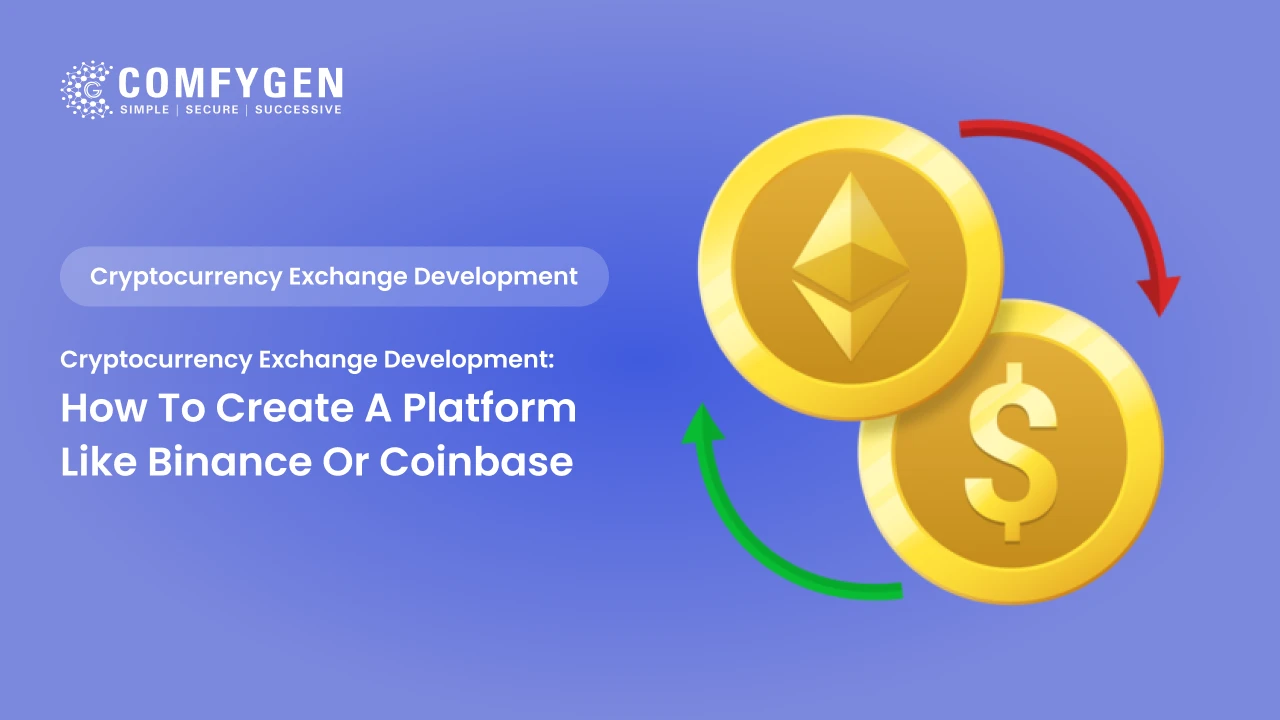
Cryptocurrency Exchange Development: How to Create a Platform Like Binance or Coinbase
The rise of cryptocurrency has revolutionized the financial world, creating new avenues for investment, trading, and technology-driven finance. Among the major…
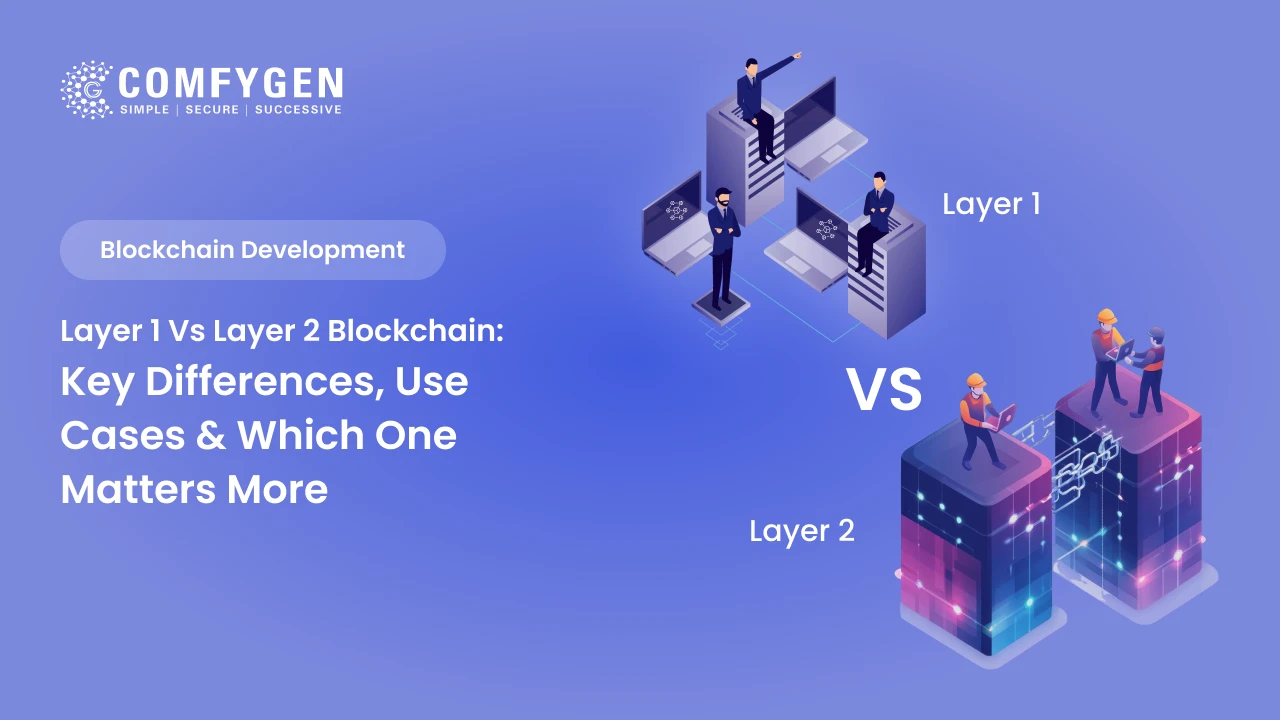
Layer 1 vs Layer 2 Blockchain: Key Differences, Use Cases & Which One Matters More in 2025
Introduction Blockchain technology, once the exclusive domain of cryptocurrencies, has now evolved into a robust tool for various industries, including finance, healthcare,…

